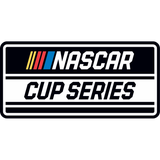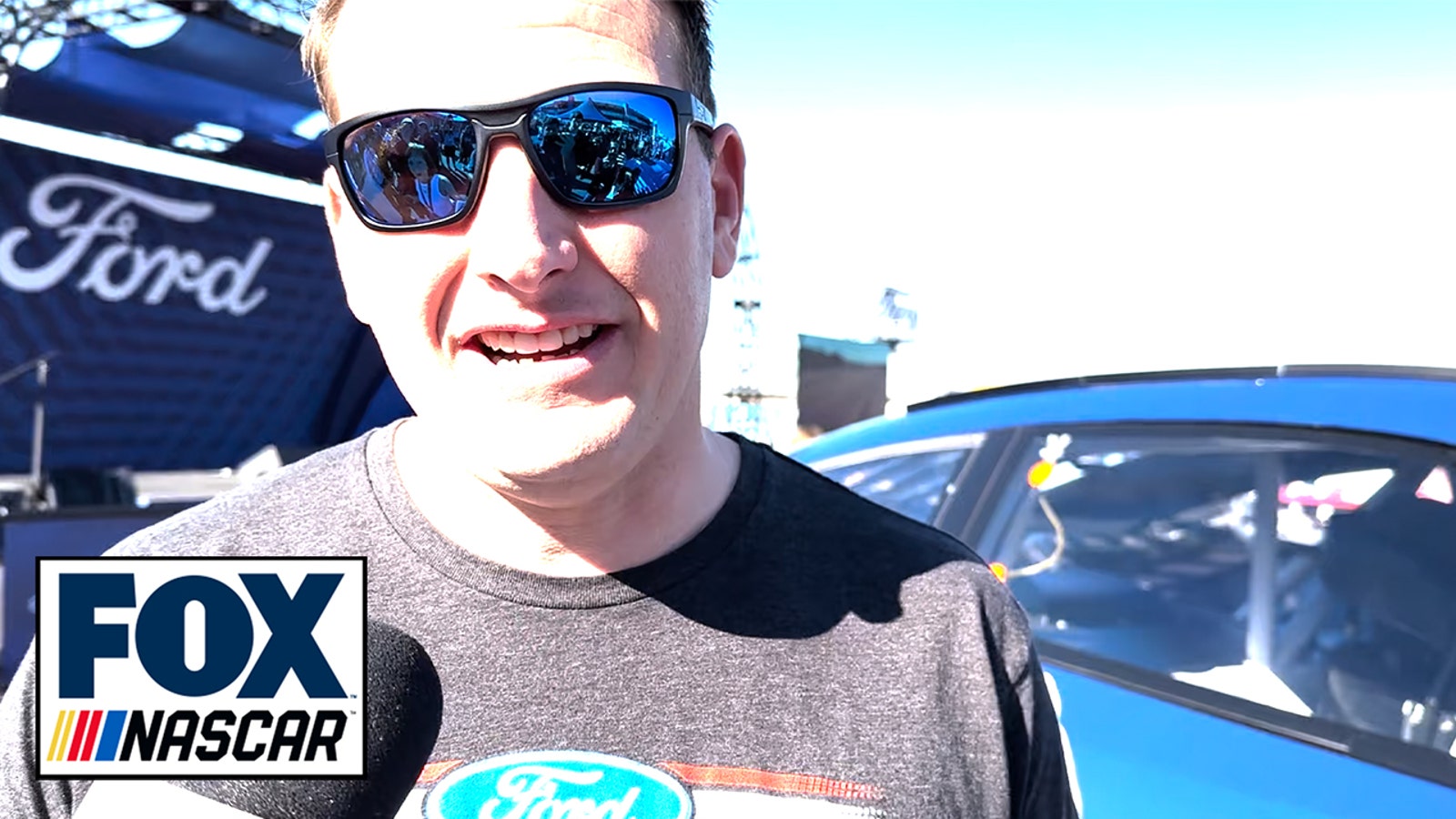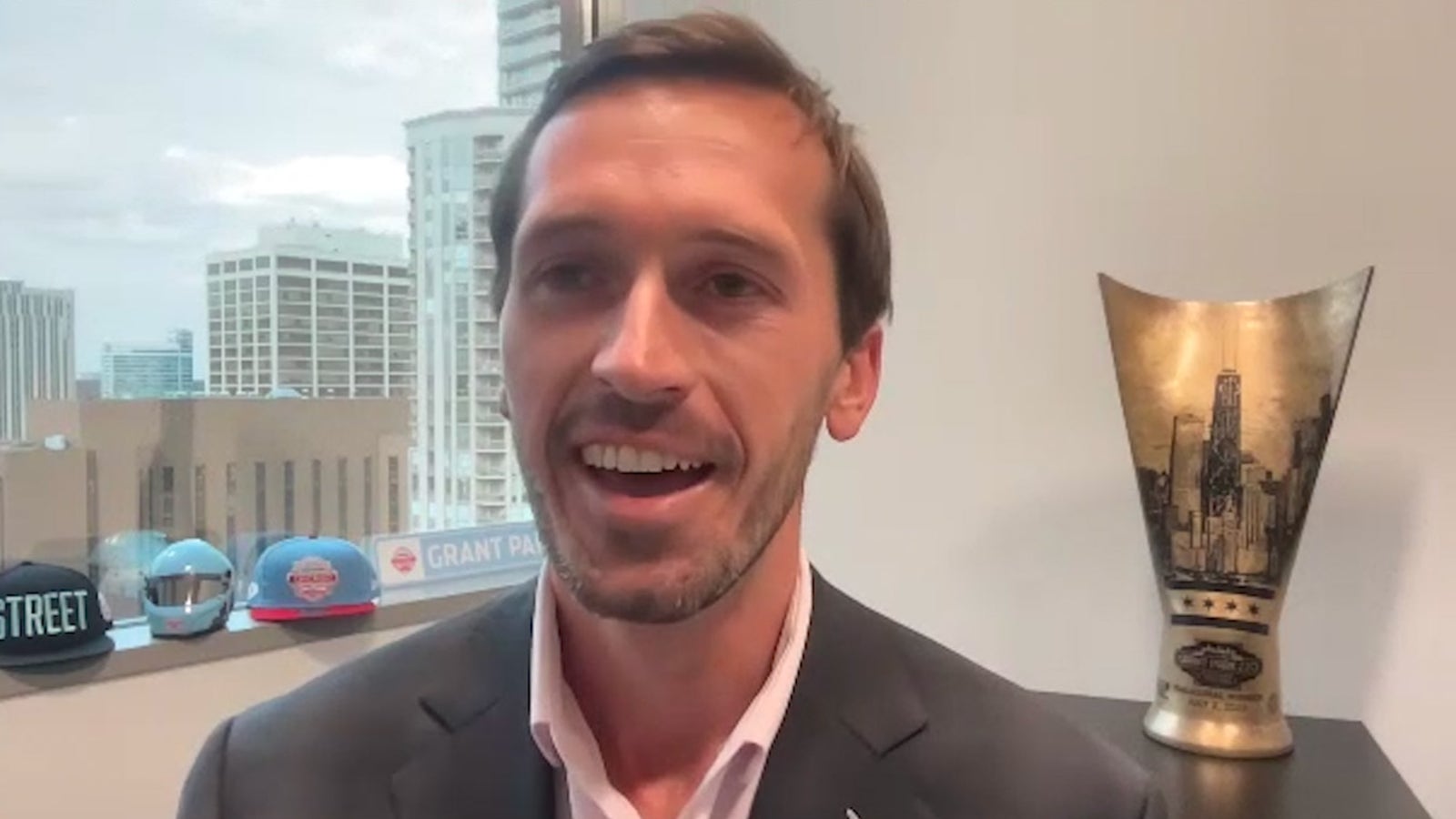
NASCAR offseason agenda: On-track testing, international races, charter negotiations
It doesn’t take a NASCAR executive for any race fan to know the priority of NASCAR’s focus on the racing product for 2024.
NASCAR will continue to look for ways to improve short-track and road-course racing.
That tops the list of offseason issues for the sport as it prepares for the 2024 season, which opens in 12 weeks (Feb. 4) with the exhibition Clash at the Los Angeles Memorial Coliseum.
NASCAR will conduct a test on Dec. 5-6 at the 1-mile Phoenix Raceway to look for ways to improve the racing. There will be six teams — two from each manufacturer — with three Champ 4 drivers: Toyota-Christopher Bell, Ford-Ryan Blaney and Hendrick-Kyle Larson will likely be among the six. Corey LaJoie has confirmed he is the second Chevrolet driver, and Legacy Motor Club is expected to get its first runs in its switch to Toyota. RFK Racing will likely be the other Ford.
Looking for more NASCAR content? Sign up for the FOX Sports NASCAR Newsletter with Bob Pockrass!
Toyota and Ford teams will have their new bodies for the 2024 season on their cars for the test.
NASCAR will continue to look at changing the underbody. At a test at the 0.75-mile Richmond Raceway in the summer, NASCAR tested a new version of the underbody that was smaller, meaning it created less downforce and it was curved in a way to eliminate the advantage a car has in clean air (which typically the leader has).
The test didn’t produce the results they had hoped, but NASCAR plans to add to that a new transaxle that they hope will eliminate shifting. Currently, drivers whose cars aren’t handling well can upshift for a surge coming off the corner, keeping a car that might be handled better in the corner from being able to pass.
"We're going to look at shifting specifically around that at our next test and see what we can do," NASCAR Chief Operating Officer Steve O’Donnell said during NASCAR’s state of the sport news conference on Nov. 3. "There will be variations, also some aero things we do with the underbody. There's some things we found in Richmond from an aero standpoint that could work as well.
"[We have] nothing to report in terms of yes, we're going to do that. We’re open to everything, but I would say short-term more around shifting and the aero package."
NASCAR could eliminate shifting immediately — with the live data they get from the cars, they can tell when a driver shifts. But NASCAR has been hesitant to use that to officiate in the moment, especially because they haven’t tested an aero package for the short tracks without shifting.
"There is always a cause and an effect," Cup driver Denny Hamlin said. "If you don’t shift, our RPMs would be so low in the middle of the corner, we would never wear out a tire. The horsepower and torque would be so low that by the time you got to the end of the straightaway and wound out the RPMs — that’s not an easy fix either.
"It’s not going to fix it by just dropping the gear. It would take time to figure it out, and certainly there is a lot of smart minds that are trying to figure it out."
Also, as part of the test, NASCAR will use tires with thicker tread, which they tested at Richmond and used in the final two races at Martinsville and Phoenix. It seemed to give the drivers a little more maneuverability but not to the point they would like.
So what about horsepower? Increasing horsepower is what many drivers advocate, but NASCAR knows that would increase costs for engine builders to determine what parts and pieces might need to be reengineered for the needed durability. The engine builders, though, have not said it is something they can’t do. Whether that can be done in time for the 2024 season is debatable.
"Everything is up for consideration," O’Donnell said. "We've proven that. You have to factor in what are the costs involved as well, right? It's not as simple as just upping the horsepower.
"You better be ready for all your [manufacturers] to be on-board. It better make sense for any potential new OEM [manufacturer] and technology. It's not just a short-term answer."
Obviously, any change to aerodynamics would require new pieces, and with NASCAR’s single-source supplier system, it takes time to manufacture those new pieces for all the teams.
"The key to better short-track racing is off-throttle time, and no one really has a great answer on how to do it," Hamlin said.
Off the track, NASCAR’s biggest hurdle remains getting the charter agreement — NASCAR’s version of a franchise — extended with the teams. The current deal runs out after the 2024 season.
NASCAR teams want an increase in the revenue split and for the charters to be permanent. The purse for races primarily comes from the television contract, with 65% to the track owners (most tracks are either owned by NASCAR or Speedway Motorsports), 10% to NASCAR as the sanctioning body and 25% to the teams. NASCAR officials have indicated that making the charters permanent is not on the table.
"We won't get into the negotiations specifically, but I would say that I'm confident that the teams and NASCAR will come to an agreement that is fair for race teams, fair for NASCAR, and help grow the sport," NASCAR President Steve Phelps said.
The charter agreement won’t get completed, Phelps said, until the media rights deal is completed. The current deals with FOX and NBC also run out after the 2024 season. NASCAR has announced that The CW will carry all Xfinity races from 2025 to 2031 but has not announced an agreement for Cup and truck races.
"We believe that we're going to have a very strong result with media partners that will look at a combination of broadcast, cable and streaming to some degree," Phelps said.
"What that looks like, I don't know. Are we getting towards the end of this process? We are. Did I think we would have a result earlier? I did. But we haven't. It's an incredibly competitive marketplace."
Other issues NASCAR will face in the coming months:
--Internationally, NASCAR did not get a deal done to race in Montreal as hoped for 2024. They are hopeful for an international race soon.
"When you look at our sport, and the ability to go into a marketplace, really grow the sport, we want to make sure we have all the levers in place to not just kind of come in and out, we want to build NASCAR within that particular country or marketplace," O’Donnell said.
"As we continued to talk in Montreal, we probably realized [it's] a little quick to be able to make that happen. In the meantime, there's been a lot of discussions in other areas, not only in the U.S. but other opportunities in North America and outside the U.S."
--On the electrical vehicle side, NASCAR has a prototype electronic vehicle that it is prepared to start testing.
"We have a car," O’Donnell said. "We have an alternative body style with that car. I would not look for us specifically to go racing with it. I think you could see it showcased at certain events next year. But there's other forms that we want to look at."
O’Donnell and other NASCAR executives recently went to Japan to look at hydrogen-powered racing technology.
Thinking Out Loud
No opinions today, just a mention of thanks to everyone who reads the newsletter! This will be the last Thursday newsletter of the year. We will still do Monday newsletters into mid-December.
Social Spotlight
They Said It
"It definitely wasn't harder than I expected. What caught me by surprise was the speed at which the sport advanced around Matt [Tifft] and I and team Live Fast. That's the part that I didn't anticipate. And [the team] just simply wasn't in a strong enough position financially to be able to keep up with our surroundings." —B.J. McLeod on selling the Cup charter to Spire Motorsports
Bob Pockrass covers NASCAR for FOX Sports. He has spent decades covering motorsports, including the past 30 Daytona 500s, with stints at ESPN, Sporting News, NASCAR Scene magazine and The (Daytona Beach) News-Journal. Follow him on Twitter @bobpockrass, and sign up for the FOX Sports NASCAR Newsletter with Bob Pockrass.







